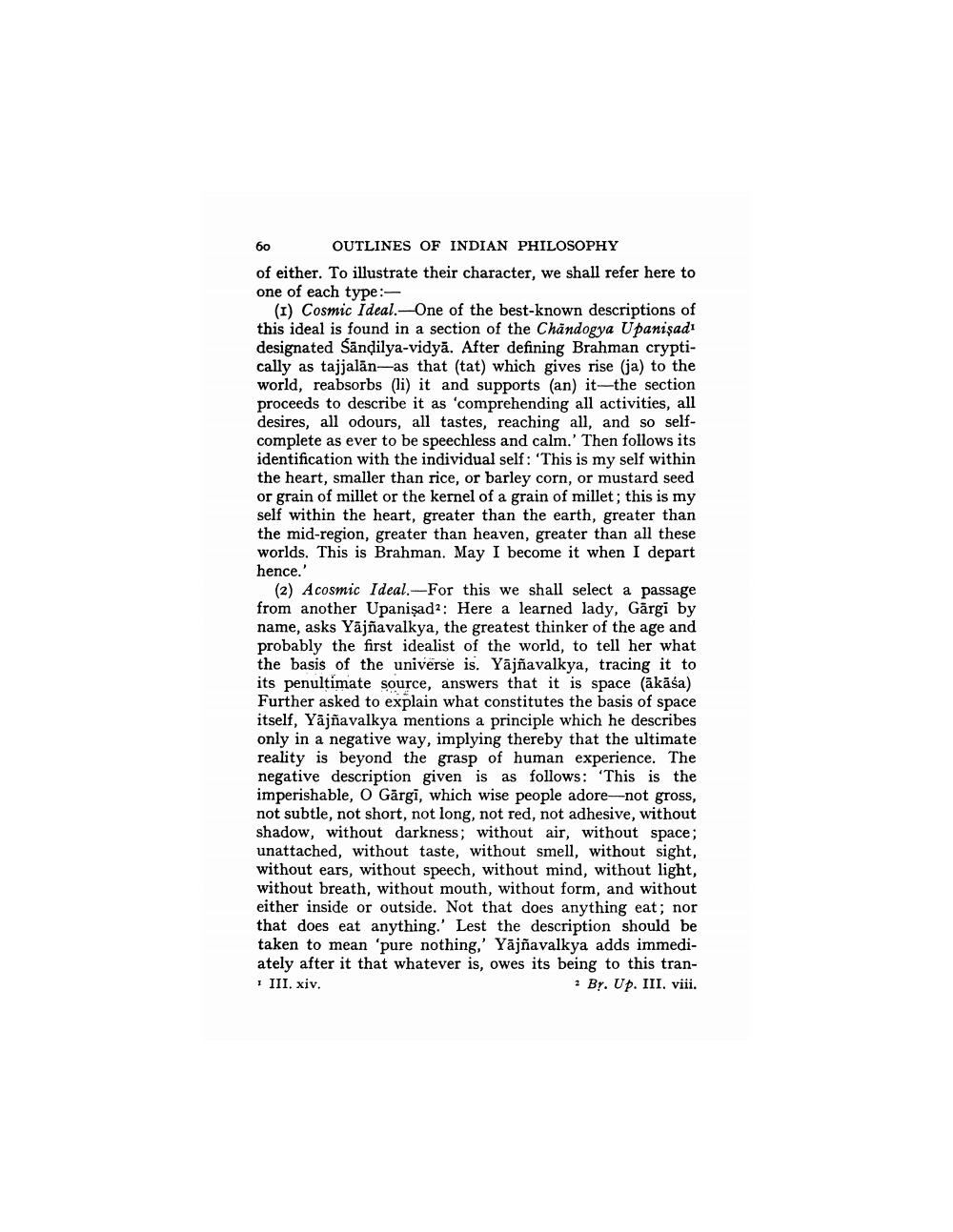________________
60 OUTLINES OF INDIAN PHILOSOPHY of either. To illustrate their character, we shall refer here to one of each type:
(1) Cosmic Ideal. One of the best-known descriptions of this ideal is found in a section of the Chandogya Upanişadı designated Sandilya-vidyā. After defining Brahman cryptically as tajjalan-as that (tat) which gives rise (ja) to the world, reabsorbs (li) it and supports (an) it-the section proceeds to describe it as 'comprehending all activities, all desires, all odours, all tastes, reaching all, and so selfcomplete as ever to be speechless and calm.' Then follows its identification with the individual self: 'This is my self within the heart, smaller than rice, or barley corn, or mustard seed or grain of millet or the kernel of a grain of millet; this is my self within the heart, greater than the earth, greater than the mid-region, greater than heaven, greater than all these worlds. This is Brahman. May I become it when I depart hence.
(2) A cosmic Ideal. For this we shall select a passage from another Upanişada: Here a learned lady, Gārgi by name, asks Yājñavalkya, the greatest thinker of the age and probably the first idealist of the world, to tell her what the basis of the universe is. Yājñavalkya, tracing it to its penultimate source, answers that it is space (ākāśa) Further asked to explain what constitutes the basis of space itself, Yājñavalkya mentions a principle which he describes only in a negative way, implying thereby that the ultimate reality is beyond the grasp of human experience. The negative description given is as follows: This is the imperishable, O Gärgi, which wise people adore--not gross, not subtle, not short, not long, not red, not adhesive, without shadow, without darkness; without air, without space; unattached, without taste, without smell, without sight, without ears, without speech, without mind, without light, without breath, without mouth, without form, and without either inside or outside. Not that does anything eat; nor that does eat anything.' Lest the description should be taken to mean 'pure nothing,' Yājñavalkya adds immediately after it that whatever is, owes its being to this tran1 III. xiv.
2 By. Up. III. viii.




